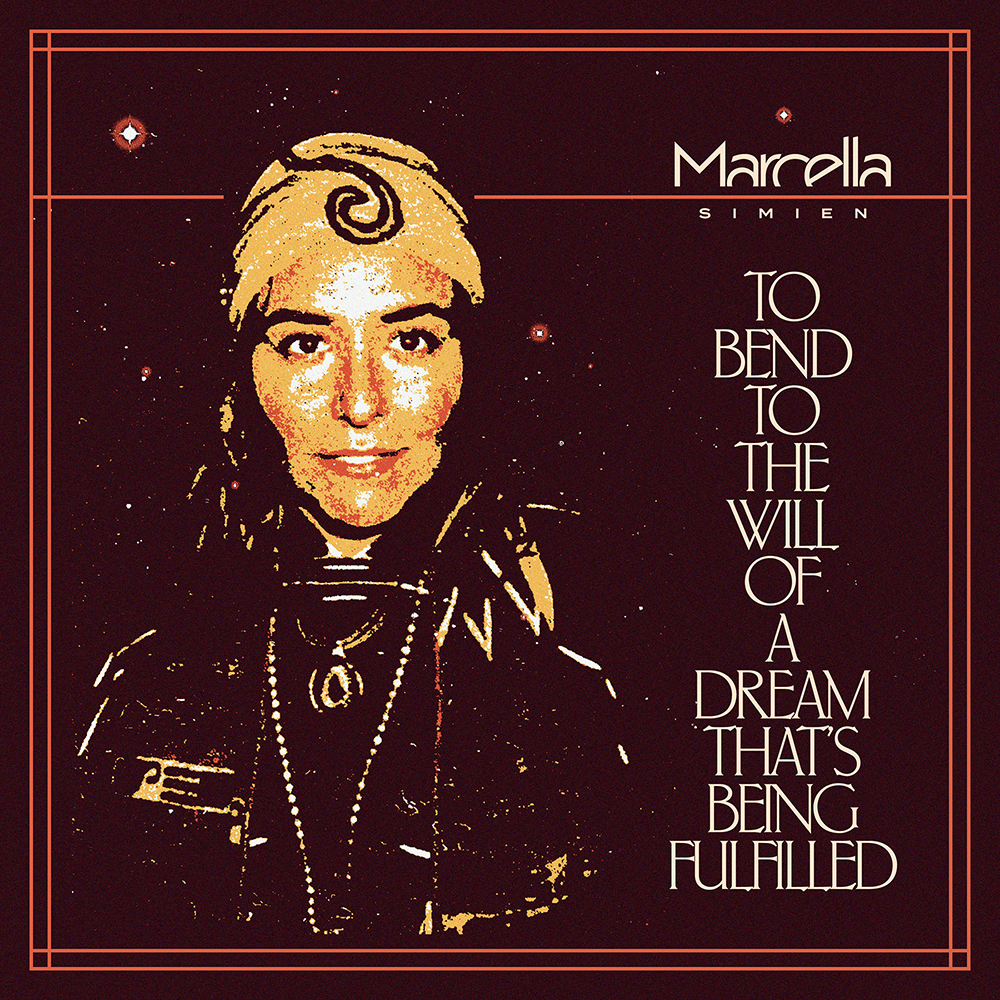The first words of Marcella Simien’s new album, To Bend to the Will of a Dream That’s Being Fulfilled, are the perfect introduction to the journey that awaits listeners: “May I heal this family bloodline, forwards and backwards through time.” It’s an incantation of sorts, delivered with a devotional energy that sets the tone for what’s to come. Musically, it’s a departure from Simien’s previous recorded work by way of its minimalism, her main accompaniment for this song being a piano, so evocative of New Orleans and Louisiana. That region, of course, is where the Simiens have been for generations, and where any journey into the singer’s family bloodline must take her.
But while that’s zydeco country (her father Terrance being one of the most celebrated artists of that genre), this is not a zydeco album. Nor is it “swamp soul,” as the rootsy-yet-eclectic sound of Marcella Simien’s band has come to be called. For this most personal of journeys, she’s playing nearly all the instruments, crafting a setting in a kind of synthetic world-building, evoking the sweep of generations with the sweep of electronic filters.
With the new sound comes a new performance style, as Simien will unveil on Saturday, November 23rd, at Off the Walls Arts. “Yvonne [Bobo] built this structure out of metal,” Simien says, “with a screen on the front, and Graham [Burks] will be projecting visuals on this cylinder. It’s gonna be this really interesting experience for the audience, something new.”

Yet the electronic approach itself is not especially new to Simien. “I don’t even know where to begin with my love for synths, from Kraftwerk to Gary Numan to Gorillaz,” she says. “I always wanted to explore that more. Then we finally invested in a Korg recently.” With the new album, that investment has come to fruition, but in a subtle way. This sculpted audio universe doesn’t wear its synths and drum machines on its sleeve, yet it doesn’t shy away from them, either.
Other, rootsier sounds do make an appearance. Speaking of a song honoring her late great-grandmother, Simien says, “With the song ‘Lelia’ in particular, which was the guiding light for the whole idea, I intentionally used instruments that Lelia would have heard in her life and in the 1930s, when she was young and building her family.” Lelia is a centerpiece of the album, and the track bearing her name begins with the sounds of crickets in a field at night, then Simien saying, “Recently I’ve been writing with my great-grandmother.” Indeed, listening to the album, it feels as though Lelia is sitting in the room with us, though Simien never met her.
Nor did her father, Lelia having died when he was an infant. Yet Simien felt a deep bond with her father’s grandmother, and the small town where she helped raise him. “I spent a lot of time in Mallet, Louisiana, a very small community outside of Opelousas,” she says. “And I feel this deep, deep connection to the Simiens. I spent so much of my time around them there, where our family goes as far back as the early 1700s, when they settled on that land.” Simien recalls imagining Lelia when visiting the old family house, where “there was this old photo of her when she was 15, taken on the day she got married. And you can see this beautiful Creole woman with long, dark hair, and these hands of hers reminded me of my hands. I would just stare at that picture, and I think she became a deeper part of me, beyond the DNA.”
Paradoxically, the first word of “Lelia” is “hydrated,” probably not a word used much in Mallet back in the day. Yet that’s also a clue to the power Simien finds in her family past: She came to it through her yogic practice, as a source of strength when she herself was navigating some dark days of her own. It was a time when she struggled with pharmacological dependence. “After a decade of being prescribed Adderall,” she confides, “I decided to get off it. It’s been over three years now, and I don’t miss it at all, but it was scary because I really didn’t trust myself for so much of my 20s, you know?”
Through the struggle, Lelia and others in her family lore were guiding lights. “I started to think about just how challenging her life was,” Simien says. “Giving birth to 15 children, living off the land, making your own stuff, and building a life with next to nothing — I couldn’t comprehend it, but I always thought, ‘If she could handle that, I can handle whatever I’m going through.’ She was tough, and it showed me that there’s so much I can learn from these women. And I want to honor them any way that I can.”
